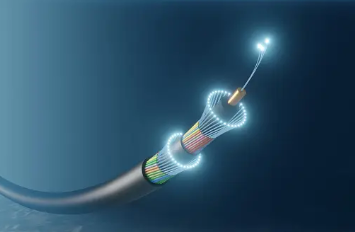
In today’s interconnected world, PC cables play a crucial role in bridging the gap between devices and components, facilitating data transfer, power delivery, and seamless connectivity. However, as technology evolves, so does the need for more advanced and efficient cable solutions. This article explores the future of PC cables, delving into emerging trends, technological advancements, and their potential impact on PC connectivity.
Current State of PC Cables
Currently, PC cables encompass a wide range of types and connectors, each serving specific purposes. From HDMI and USB to Ethernet and DisplayPort, these cables enable us to connect monitors, peripherals, storage devices, and networking equipment. However, this existing landscape also presents challenges such as cable clutter, limited bandwidth, and compatibility issues.
Emerging Trends and Technologies
The future of PC cables holds exciting possibilities with the emergence of new technologies and trends that address current limitations. USB-C, with its reversible design and increased versatility, has gained significant momentum. Its ability to carry power, data, and video signals simultaneously makes it a promising candidate for future PC connectivity.
Another notable development is Thunderbolt, which has evolved to offer even higher speeds and increased capabilities. With Thunderbolt 4 and beyond, we can expect faster data transfer rates, improved video output, and daisy-chaining support, enabling more streamlined connectivity for high-performance devices.
The advent of wireless connectivity options also promises a cable-free future. Wireless USB, wireless HDMI, and wireless charging technologies have made significant strides, offering convenience and flexibility without compromising on performance. These wireless alternatives present exciting opportunities for PC users, particularly in scenarios where cable management is a challenge or mobility is a priority.
Moreover, the utilization of fiber optic cables for PC connectivity is on the horizon. Fiber optics’ exceptional bandwidth, long-distance transmission capabilities, and resistance to electromagnetic interference position them as a potential game-changer. As fiber optic technology becomes more accessible and affordable, it has the potential to revolutionize data transfer and networking within PCs.
Impact on PC Connectivity
The advancements in PC cables are set to revolutionize PC connectivity in several ways. First and foremost, faster data transfer rates will become the norm, enabling quicker access to files, reduced latency in gaming, and seamless real-time collaboration. The future of PC cables promises to break existing barriers and unlock new levels of productivity and efficiency.
Furthermore, the evolution of PC cables will enhance display capabilities. We can anticipate support for higher resolutions, refresh rates, and color depths, delivering stunning visuals in gaming, multimedia, and professional applications. PC users will enjoy immersive experiences and more accurate color representation, further blurring the lines between the virtual and the real.
The future of PC cables also envisions expanded peripheral support. As new cable technologies become standardized, compatibility with a broader range of peripherals will increase. This means better support for external storage devices, virtual reality headsets, advanced input devices, and other cutting-edge peripherals, enriching the overall PC experience.
Cable management, an eternal challenge for PC users, will see improvements as well. Future cables will offer streamlined and simplified solutions, reducing clutter and enhancing the aesthetics of PC setups. Cable management accessories will become smarter, allowing for easier organization and tidier workspaces.
Challenges and Considerations
While the future of PC cables looks promising, there are challenges and considerations to address. One significant factor is cost. The adoption of new cable technologies may involve higher upfront costs, especially during the transition phase. However, as demand increases and production scales, prices are likely to become more affordable.
Another consideration is standardization. To ensure seamless interoperability and compatibility, industry-wide standards for future PC cables need to be established. Collaborative efforts among manufacturers, organizations, and industry bodies will be crucial in developing unified standards that promote compatibility and simplify the adoption of new cable technologies.
Backward compatibility is another important consideration. As new cable technologies emerge, it’s essential to ensure compatibility with existing devices. Transitional solutions, such as adapters and converters, can bridge the gap between old and new standards, allowing users to continue using their current devices while gradually transitioning to the latest cable technologies.
Concluding thoughts…
The future of PC cables holds immense potential for transforming PC connectivity. Advancements in USB-C, Thunderbolt, wireless technologies, and fiber optics promise faster data transfer rates, enhanced display capabilities, expanded peripheral support, and improved cable management. These developments will revolutionize the way we interact with our PCs, unlocking new levels of performance, convenience, and aesthetics.
However, as we embrace the future of PC cables, challenges such as cost, standardization, and backward compatibility must be carefully addressed. Collaborative efforts, industry-wide standards, and transitional solutions will pave the way for a seamless transition and widespread adoption of these new technologies.
As PC users, we can look forward to a future where cables are no longer a hindrance but a gateway to seamless connectivity and enhanced experiences. The evolution of PC cables will empower us to create, collaborate, and connect in ways we never thought possible, propelling us into a new era of technological advancement.
In conclusion, the future of PC cables is bright and full of possibilities. As technology continues to advance, so too will our means of connecting devices and components. With the advent of USB-C, Thunderbolt, wireless technologies, and fiber optics, we can expect faster data transfer, improved display capabilities, expanded peripheral support, and streamlined cable management. While challenges such as cost and standardization remain, collaborative efforts and transitional solutions will help overcome these hurdles. Ultimately, the future of PC cables will revolutionize the way we interact with our PCs, ushering in a new era of connectivity and transforming the computing experience for users worldwide.



